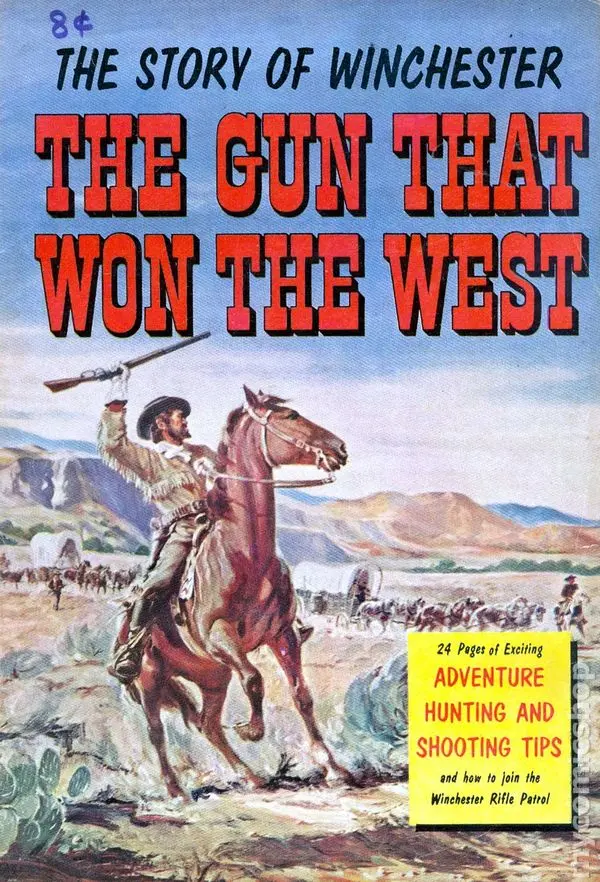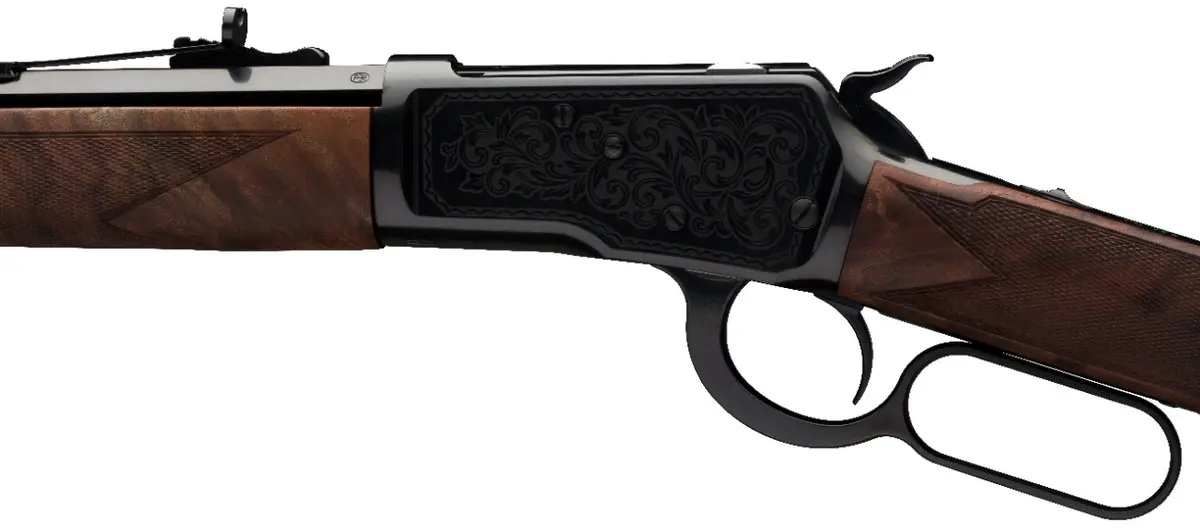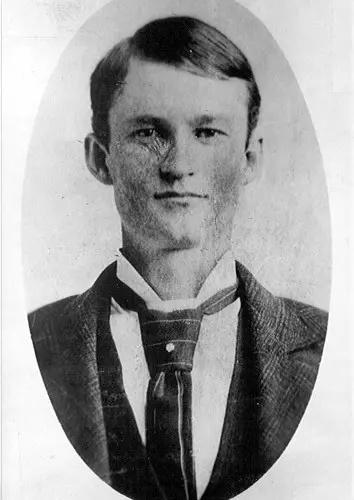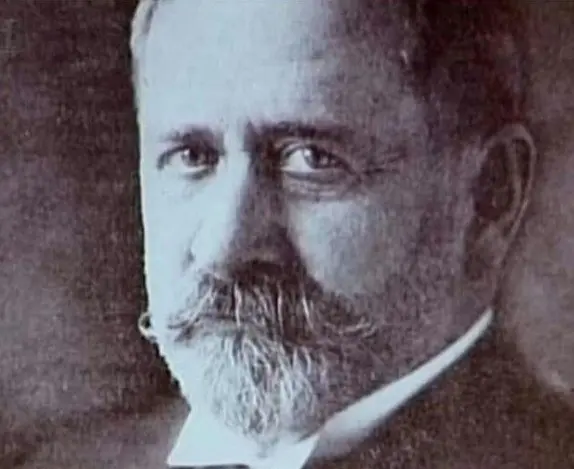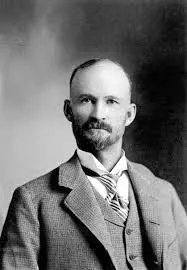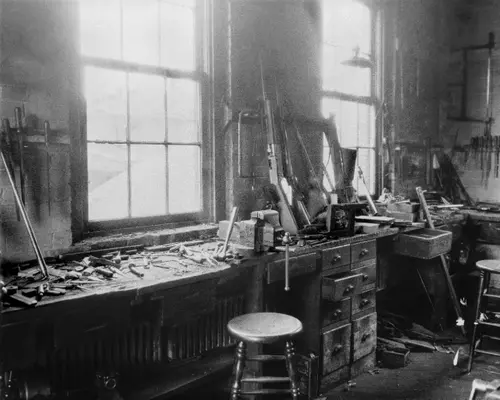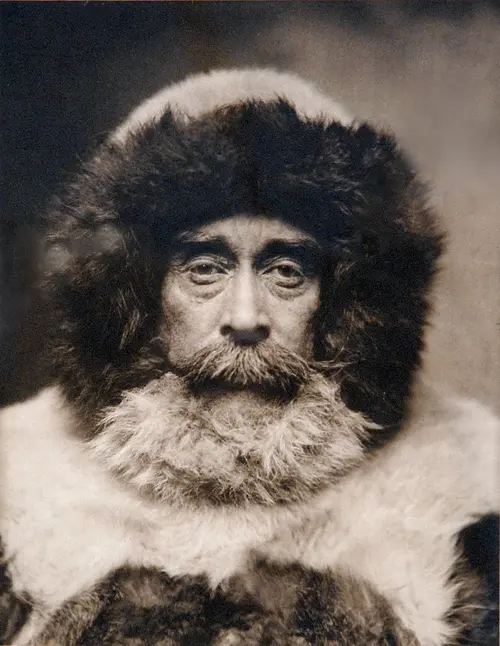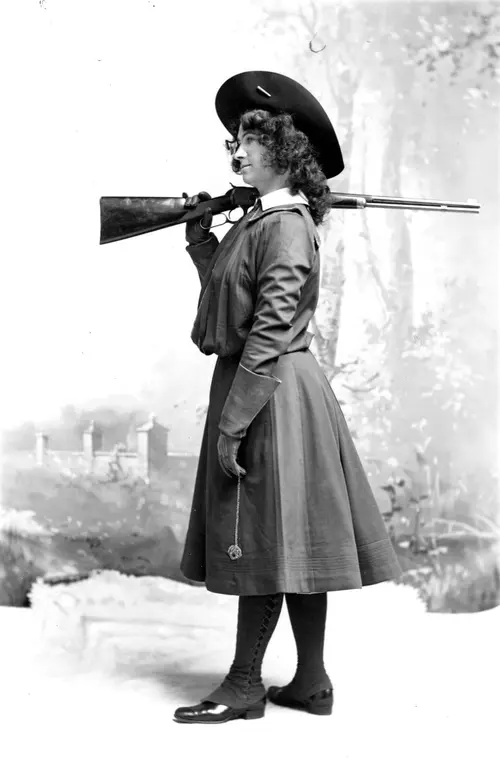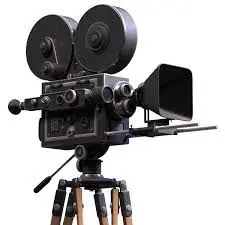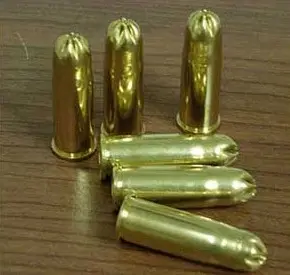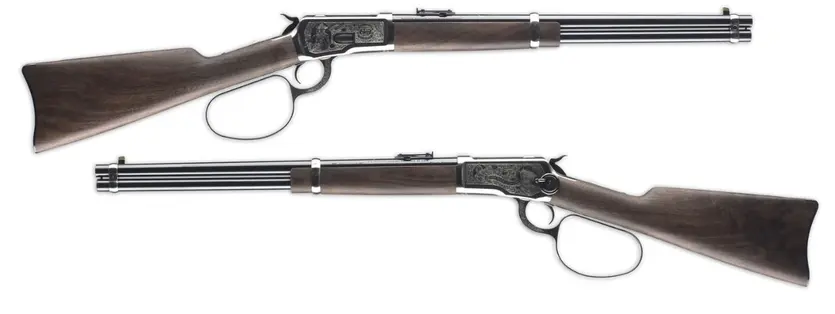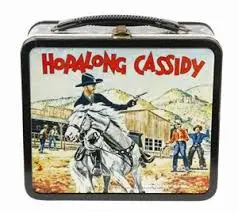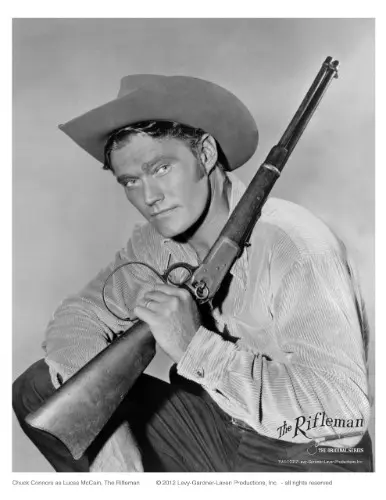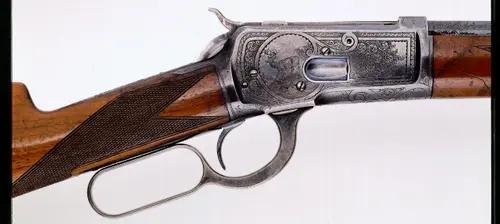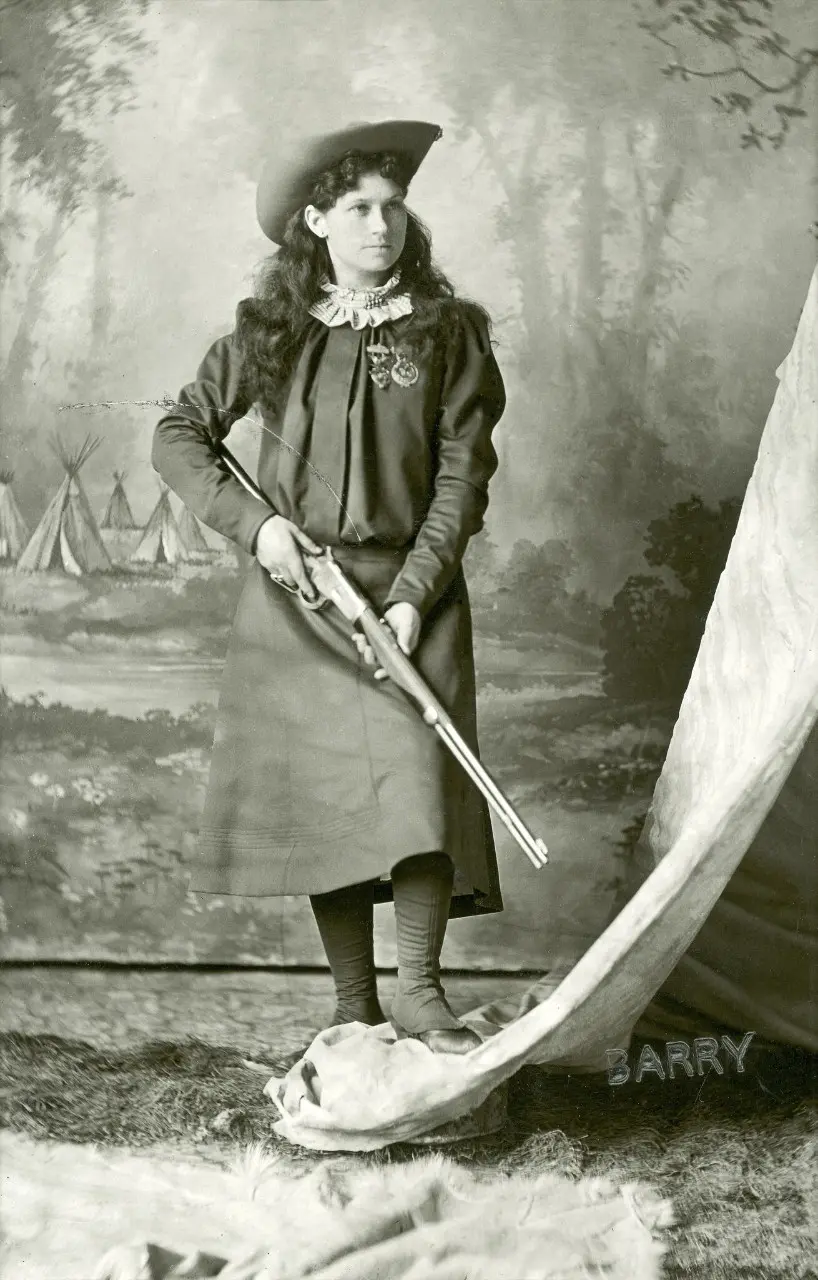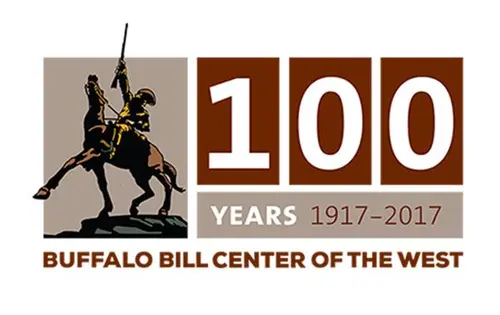The Legendary Winchester Model 1892 Turns 125!
The Legendary Winchester Model 1892 Turns 125!
If you’re talking lever-actions, you’re talking Winchester.
If you’re talking lever-actions, you’re talking Winchester.
The name Winchester has long been synonymous with lever-action rifles. From the Model 1866 Yellow Boy, the first rifle to wear the Winchester brand, to the Model 1873, the “Gun That Won The West” or the hefty Model 1886, the first lever action able to handle the potent 45-70 Government cartridge, if you’re talking lever- actions, you were talking Winchester.
But of all the Winchesters that have ridden the high country, there is one that has become the iconic lever-action of the silver screen and television, and that’s the trim, light and handy Model 1892. And 2017 marks 125 years since the introduction of the “Rifle That Won The Western.” Let’s take a look at the fascinating history of this classic lever gun. The Model 1892 owes its existence to two visionary men of the late 19th century. One was T.G. Bennett, then vice president of Winchester Repeating Arms. The other was the legendary firearm design genius John Moses Browning.
The Winchester 1892 turns 125. Happy Anniversary.
The Winchester 1892 turns 125. Happy Anniversary.
Mr. Browning’s working relationship with Winchester began in the early 1880s when a Winchester sales representative discovered a rugged and reliable single shot rifle being manufactured by several brothers in a small brick gun shop in the frontier railroad town of Ogden, Utah Territory. The hefty gun, as noted on the barrel markings as being patented by a Mr. John M. Browning, was brought to the attention of company vice president, T. G. Bennett at the Winchester factory in New Haven.
Bennett was soon on a train bound for Ogden to secure manufacturing rights from the young inventor, who was then only in his mid-20s. Mr. Browning’s single shot, with a few small refinements soon became know as the legendary Winchester Model 1885, and it is still in production today.
As part of the Browning/Bennett agreement, Winchester Repeating Arms got the right of first refusal for any new gun designs Mr. Browning created. It was the beginning of two very productive decades of collaboration between Winchester and Mr. Browning.
About a decade into their working relationship Bennett asked Mr. Browning to create a smaller, lighter lever-action saddle carbine chambered in pistol caliber cartridges to possibly replace the aging Model 1873. Meeting at the Winchester plant in New Haven, Bennett offered John M. Browning a bonus of $10,000 if he could deliver the design and a working prototype in 90 days, and $15,000 if he could deliver in 60 days.
Mr. Browning scratched his chin, looked at the calendar hanging on Bennett’s office wall and made the Winchester president a counter-offer. “Well, let’s see,” mused Browning. “It takes five or six days between here and Ogden. Say we call it twelve days for me to get home and for the rifle to get to you by rail express. I’ll have the new rifle in your hands in 30 days for $20,000, or I’ll give it to you.”
John Browning’s offer was instantly accepted by Bennett, but Matt Browning, John’s brother (and the one tasked with the business side of the Browning design team), quietly asked John if he could actually pull it off. John noted that in all the years he’d worked with Bennett he’d never seen him change his expression from his normal heavily-bearded poker face. John thought it would be worth $20,000 just to see Mr. Bennett jump a bit.
John Browning was already working on the new rifle design in his head as he walked out of the Winchester president’s office and he continued to make sketches and calculation on the train ride home. The two Browning brothers got off the train in Ogden in the wee hours of the morning and were in the gun shop shaping the rifle’s receiver on a mill that same afternoon.
True to his word, Browning had a working prototype of the rifle test fired two weeks later and the new gun was in T.G. Bennett’s hands well before the 30-day deadline. One of the hallmarks of any John M. Browning design is the gun’s overall size is dictated by the size of the cartridge it will fire. Because the new rifle would use pistol class cartridges exclusively it could be made smaller and lighter than most previous lever-action offerings. The svelte new saddle rifle was quickly dubbed the Model 1892. Like the legendary Model 1873 that preceded it, it was chambered for shorter pistol class cartridges and allowed a man afoot or on horseback to use the same ammo he carried for his revolver.
To say the Model 1892 was an instant hit would be an understatement. Numerous celebrities like Annie Oakley flocked to the new gun for exhibition shooting. Arctic explorer Admiral Robert Peary carried a Model 1892 on his trek to the North Pole. The gun became hugely popular in both South and Central America as that region was being fully explored and developed. Countless others put the ’92 to good use in hunting, camping, law enforcement or anywhere that a durable, compact rifle was needed.
Celebrities like Annie Oakley flocked to the new gun for exhibition shooting.
But it was in a soon-to-be-developed entertainment technology that the Model 1892 found its most lasting place – something people called “moving pictures,” and especially in a uniquely American storytelling genre they called “The Western.”
Early motion pictures were produced in an assembly line fashion, and any technical developments that helped speed production or reduce costs were quickly adopted. Because the Model 1892 used the same class of cartridge as the revolvers carried by the actors, the prop men wanted to stock only one type of blank cartridge for use on the set.
This lead to the development of the famous 5 in 1 blank - a bottlenecked rimmed case loaded with a light charge of black powder that produced lots of flash and white smoke for the primitive cameras. Because it was slightly bottlenecked, the same 5 in 1 blank could be used in black powder revolvers, and it fed well through pistol caliber lever action rifles like the Model 1892.
While the Model 1892 was common in almost every Western movie from day one, it became a Hollywood (and popular culture) icon in the 1939 Western movie “Stagecoach,” directed by John Ford.
In the film a rugged young actor going by the screen name of John Wayne makes one of the most memorable on-screen entries of all time, standing in the middle of a dusty road in Monument Valley with a saddle over one arm and twirling a Model 1892 with a large loop lever in the other. And, as they say in showbiz, a star was born. Wayne would make his ivory handled single action revolver and a large loop Winchester carbine his iconic sidekicks for the remainder of a long and lustrous acting career.
Western movies quickly became a staple of Hollywood productions for the next half-century. A trip to the local movie house to catch the latest Western became a weekly event for many American families, and millions of young boys flocked to the Saturday morning matinee, usually a double feature Western staring John Wayne, Roy Rogers, Hopalong Cassidy, the Lone Ranger or the Cisco Kid. The vision of the good guy in a white hat bringing outlaws and rustlers to justice with a Winchester Model 1892 was part of every young American boy’s upbringing in that era.
It was also the birth of the mass media merchandising tie-in – everyday items like kid’s lunch boxes, little cowboy hats, shiny belt buckles, flannel pajamas and virtually anything else that the studios could slap the actor’s name and image on, and, in turn, countless little boys would endlessly pester their parents to buy every time they went to a toy store.
By the 1950s another technology known as television was replacing movies as America’s favorite entertainment format, and almost every home had a black and white TV flickering in the corner of the living room. The new medium created a massive demand for programming, and TV executives immediately turned to the proven formula of the Western action/drama/comedy. Throughout the 1950s and well into the 1960s many of America’s most popular prime time TV shows like “Rawhide,” “Wagon Train,” “Have Gun. Will Travel,” “The Wild, Wild West” and “Gunsmoke” were Westerns.
To help break out of the crowd, several programs had their main character armed with a lever-action rifle, usually a Winchester Model 1892, rather than a sixgun. One long running prime time program starring Chuck Connors even took its title “The Rifleman” from the Winchester Model 1892 saddle gun he carried.
Another popular program, “Wanted: Dead or Alive” propelled the young actor Steve McQueen to stardom. McQueen’s firearm of choice was a cut-down Model 1892 dubbed the “Mare’s Leg. “While still chambered for a pistol caliber cartridge, studio prop men added an ammo belt filled with huge 45-70 shells to McQueen’s costume because they looked “more impressive” on the low-resolution TV screens of the era.
As Western films and TV programs became scarce in the decades following the 1960s,consumer demand wained and the Model 1892 went into a hiatus. Many experts predicted the rifle would become a mere footnote in firearm history. However, in the 1990s several popular Western-themed motion pictures, coupled with the explosive growth of an exciting new shooting sport called Cowboy Action Shooting (the grown-up version of the ‘Cowboys and Outlaws’ game we all played as kids, except it’s played with targets and live ammo) created a huge demand for authentic firearms of the American Frontier and Wild West eras.
With the value of original vintage Winchesters increasing dramatically every year, often to the point many collectors didn’t want to keep shooting them, Winchester Repeating Arms reintroduced the Model 1892 to an modern and enthusiastic shooting sports audience.
While there are some cheaper knockoffs of the Model 1892 to be found, a great many Winchester enthusiasts insist on carrying and competing with the genuine article – a real lever-action Model 1892 with the timeless name Winchester Repeating Arms marked on the barrel.
For you, we are proud to provide today’s Model 1892, the finest quality saddle gun we’ve ever produced.
And the rest, as the say, is history.
The legendary Annio Oakley Model 1892 was at last year's SHOT Show.
The legendary Annio Oakley Model 1892 was at last year's SHOT Show.
See it now at the Cody Firearms Museum. Here’s your once in a lifetime chance to see Annie Oakley’s personal Winchester Model 1892 rifle. This gun was specially made for Annie by Winchester Repeating Arms and is the very gun she used during numerous shooting exhibitions with Buffalo Bill’s Wild West show.
The rifle is chambered in .44 WCF (44-40 Winchester) and used a smoothbore barrel so that short-range birdshot cartridges could be safely fired when she was shooting in front of large crowds in confined places like rodeo arenas and stadiums.
This unique historic rifle and associated Oakley artifacts come direct from the collection of the Cody Firearms Museum at the Buffalo Bill Center of the West in scenic Cody, Wyoming. This national historic treasure chest is celebrating its 100th anniversary in 2017.
Learn more about Annie Oakley’s incredible entertainment career at https://centerofthewest.org/explore/buffalo-bill/research/annie-oakley/
Resource info on the rifle and contents on display -- Annie Oakley's Winchester Model 1892 Smoothbore Rifle Winchester Repeating Arms Company (New Haven, CT), .44WCF, serial number 301670, date: 1905 Annie Oakley (1860 - 1926) was one of the most popular performers for Buffalo Bill's Wild West. Oakley was born Phoebe Ann Moses in Darke County, Ohio and began hunting at an early age to support her family. At the age of 15, she entered a shooting match with famed marksman Frank E. Butler. Oakley won the match, ultimately married Butler, and went on to international fame for her marksmanship.
This half round/half octagon barreled Model 1892 custom rifle was made for and used by Annie Oakley. The use of shot necessitated the smoothbore barrel on this gun. The range of the shot was reasonably short enough to prevent injuries when performing for large crowds
Copyright Winchester Repeating Arms, 2017. Written by Winchester Repeating Arms staff writer Scott Engen. Photos copyright by Winchester Repeating Arms, from Browning company archives (used with permission) in the public domain or as indicated in the caption.



